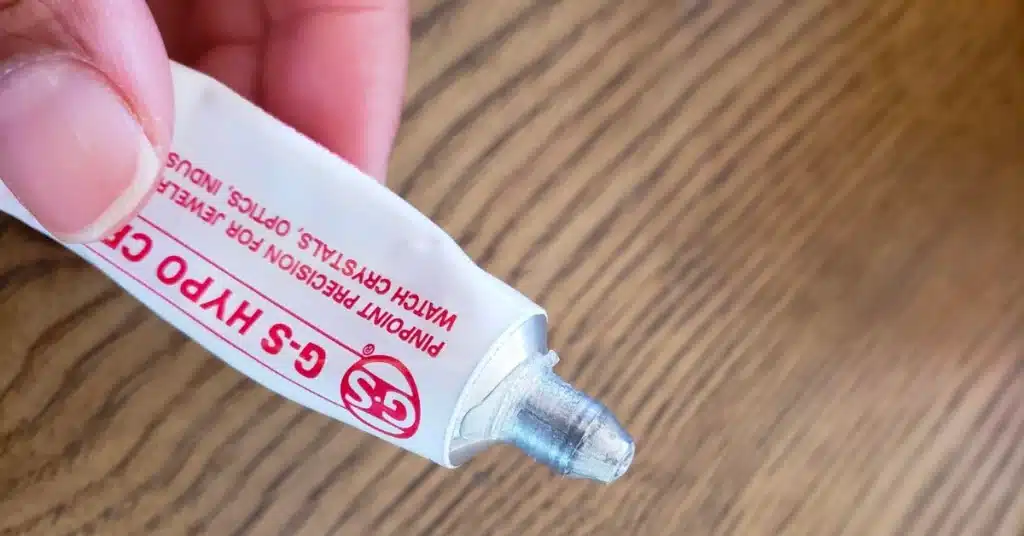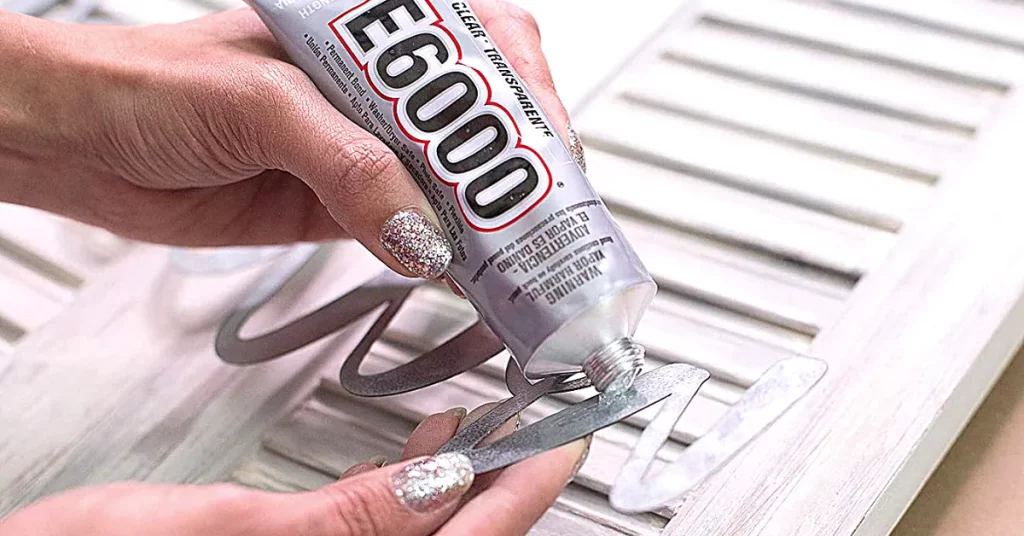You will likely find the battle of GS Hypo Cement vs. E6000 at the heart of any crafts project or household repair task.
Both are revered for their adhesive prowess, but which one truly stands out?
This guide highlights the unique features, applications, and benefits of each, facilitating a more informed choice.
Read More: e6000 vs. e8000 Glue
GS Hypo Cement vs. E6000
About GS Hypo Cement
Characteristics and Uses
GS Hypo Cement, recognized for its precision and quality, is a unique tool among jewelers and watchmakers.
Initially developed for precision watch repairs, this adhesive excels in bonding delicate materials.
Its needlepoint applicator allows for exact application, ensuring no mess and no waste.

Advantages and Disadvantages
GS Hypo Cement’s key strength lies in its precision.
Its clear drying formula leaves a neat finish, and its medium-strength bonding capability ensures secure fastening without damaging delicate items.
However, there are better choices for heavy-duty or outdoor applications, and prolonged exposure to air may cause the applicator to clog.
Read More: Best Glue for Jewelry
Read More: E6000 Vs. E6000 Plus
About E6000
Characteristics and Uses
On the other hand, E6000 is a high-performance industrial adhesive.
Renowned for its flexibility, toughness, and superior bonding strength, it’s an ideal choice for many materials – glass, fabric, ceramics, or metal.
It is also waterproof and paintable, making it suitable for outdoor projects.

Advantages and Disadvantages
E6000 is celebrated for its versatility and durability, easily tackling jobs from DIY crafts to heavy-duty repairs.
It offers excellent heat and chemical resistance.
However, it may not be ideal for intricate works requiring precision, and its strong chemical odor could be off-putting.
Read More: E6000 vs. B7000
Main Differences Between GS Hypo Cement and E6000
Understanding your requirements is the key to choosing between GS Hypo Cement and E6000.
| Parameter | GS Hypo Cement | E6000 |
|---|---|---|
| Strength | Medium | High |
| Precision | High | Medium |
| Flexibility | Low | High |
| Outdoor Suitability | No | Yes |
| Waterproof | No | Yes |
| Chemical Resistance | No | Yes |
Applications of GS Hypo Cement
GS Hypo Cement is the perfect companion for small-scale, detail-oriented projects. Jewelry making, watch repairs, and miniature model building are a few examples of where this adhesive shines.
Applications of E6000
E6000’s robust and flexible nature allows for a broad spectrum of applications, including automotive repairs, home improvements, shoe repairs, and crafting projects involving various materials.
How GS Hypo Cement Works?
GS Hypo Cement belongs to the cyanoacrylate adhesives family. It works through anionic polymerization, requiring some moisture to initiate.
Once the adhesive comes into contact with a tiny amount of water (like the moisture on most surfaces), the molecules start linking together, forming a strong bond.
How does E6000 work?
E6000, in contrast, is a one-part epoxy. This means that it cures without needing to be mixed with another substance.
It works by forming a chemical bond with the surface material, leading to a tough, flexible, and durable attachment.
Read More: Does E6000 Work on Plastic?
Final Opinion
In the contest of GS Hypo Cement vs. E6000, it’s clear that both adhesives have their unique strengths and applications.
GS Hypo Cement is the go-to option for tasks that demand precision and delicacy, while E6000 wins the day with its versatility, durability, and heavy-duty performance.
It’s less about which adhesive is better overall and more about which is suitable for your specific task. With this guide, you’re now equipped to make that decision confidently.

